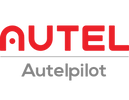Orthophotography, a core technology in modern surveying and mapping, produces high-resolution, georeferenced, geometrically corrected imagery, providing high-precision data support for GIS, urban planning, agricultural monitoring, and disaster assessment.
Ortho-mosaiced images not only display precise geographic locations but also reflect the actual characteristics of the terrain, down to the tiniest details. Drone orthophotography has become a standard technology in the surveying and mapping industry.
What is orthophotography?
Orthophotography corrects geometric distortion and terrain relief from the original aerial imagery to produce two-dimensional images that conform to a map projection and have a uniform scale.
Compared to ordinary aerial photographs, orthophotos have the following characteristics:
Geometrically accurate: Each pixel corresponds to a true geographic coordinate (such as the WGS84 coordinate system), making them directly usable for measurement and analysis.
Distortion-free: The effects of lens distortion, terrain relief, and camera tilt are eliminated, resulting in images that resemble a flat map viewed vertically from above.
High-resolution: Typically achieving centimeter-level ground resolution, resulting in rich detail.
Principles of Drone Orthophotography
Orthophotography, based on photogrammetry, is like creating an ultra-precise aerial mosaic. High-resolution drone-captured images are seamlessly stitched together to create 2D and 3D orthophotos.
Image Acquisition: Using a drone or aircraft equipped with a high-resolution camera, overlapping images are captured along a predetermined route.
Geometric Correction: Using GCP or RTK real-time kinematic differential data, lens distortion and camera attitude (pitch, yaw, and roll) are corrected.
Terrain Correction: Incorporating a digital elevation model (DEM) eliminates the effects of terrain projection on the image, ensuring that pixels accurately correspond to the surface.
Image Stitching: Using feature point matching and mosaicking algorithms, multiple images are stitched together into a seamless orthophoto.
Georeferencing: Images are embedded in a global coordinate system (such as WGS84 or UTM) and generated in formats such as GeoTIFF for use with GIS software.
Advantages of Drones in Orthophotography
Two-dimensional orthophoto maps offer astonishing detail, while three-dimensional orthophotos offer unimaginable depth. Leveraging the advancement of drone technology, orthophotography has shifted towards greater flexibility and cost-effectiveness, demonstrating key advantages.
High Efficiency and Flexibility
Foldable commercial drones can take off in minutes and cover areas of several square kilometers. They can flexibly adjust their altitude and flight path during flight, offering 720° sensitive obstacle avoidance and enabling high-precision imagery acquisition over a small area in a single flight.
For example, the Autel EVO MAX 4TXE achieves approximately 5cm GSD at an altitude of 100 meters, enabling stable flight in complex terrain such as mountainous, urban, and forested areas.
High Precision and Multidimensional Data
Orthophotos offer incredible precision and accuracy. The Autel RTK drone series, equipped with multiple sensors and ground control points, enables 3D and multi-dimensional geographic information acquisition, ensuring absolute centimeter-level positioning accuracy. This makes it ideal for tasks such as precision agriculture and construction planning.
Cost-Effectiveness
Compared to traditional manned aerial photography, drone aerial photography significantly reduces operating and maintenance costs, efficiently automates processes, and allows for repetitive tasks to be completed in a short period of time.
UAVs equipped with orthophoto technology can quickly cover large areas, significantly reducing costs and accelerating project schedules. Both time and mapping costs can be significantly reduced.
Drone Orthophoto Implementation Process
Using a drone for aerial photography is straightforward, but creating orthophoto maps using a drone involves a systematic process that combines aerial photography, data collection, and post-processing. We'll explain the complete steps of the drone orthophoto workflow here.
Mission Planning:
Determine the objectives: Define the survey scope, resolution, and application scenario (e.g., topographic mapping, urban planning).
Route Design: Use professional drone mapping software to plan a grid or strip route, ensuring image overlap (70%-80% horizontally and 60%-70% vertically).
Environmental Assessment: Check weather, wind speed (<8m/s), and lighting conditions to avoid shadows or strong winds.
Equipment Preparation:
Select a drone, such as the Autel EVO II Dual 640T RTK V3, equipped with a high-resolution binocular vision camera, capable of producing 8K HD images and 640x512 thermal images.
Calibrate sensors: Ensure the camera focal length, RTK module, and IMU are functioning correctly.
Set Ground Control Points (GCPs): Deploy ground control points (GCPs) throughout the survey area to improve absolute positioning accuracy.
Data Collection:
Perform automated flight, capturing high-overlap images (1-2 frames per second).
Record RTK data and camera attitude information (latitude, longitude, pitch, etc.).
Maintain a consistent flight altitude (typically 50-150 meters) to maintain a stable GSD.
Data Processing:
Preprocessing: Import images into photogrammetry software for lens distortion correction.
Feature Matching: Extract image feature points using the SIFT or ORB algorithm and perform stitching.
Orthorectification: Combine the DEM and GCPs to generate orthorectified images. Output Format: Generates GeoTIFF, DSM, or 3D models with embedded geographic coordinates.
Result Analysis and Application:
Import into a GIS platform for measurement, classification, or overlay analysis.
Generate reports or visualizations for specific applications.
Application Scenarios of UAV Orthophotography
UAV 2D and 3D orthophotos have a significant impact on numerous sectors, including precision agriculture, architecture and engineering, environmental monitoring, urban planning and development, archaeology and cultural heritage preservation, mining and natural resource management, emergency response and disaster management, land surveying, infrastructure inspection and maintenance, and more.
In practice, UAV orthophotography can capture 10 square kilometers of imagery in a single day, generating 5cm GSD orthophotos that assist commanders in data-driven decision-making, saving significant time and manpower.
Conclusion
Orthophotography, through drone technology, enables efficient and accurate geographic data collection, reshaping the efficiency and application scope of the surveying and mapping industry. Drone surveyors can choose the most suitable surveying drone from the Autel RTK drone series to elevate their drone photogrammetry capabilities.








